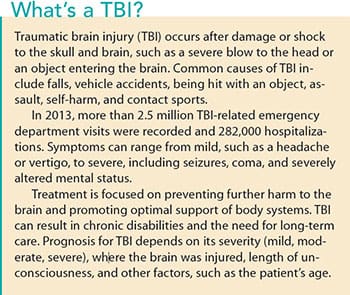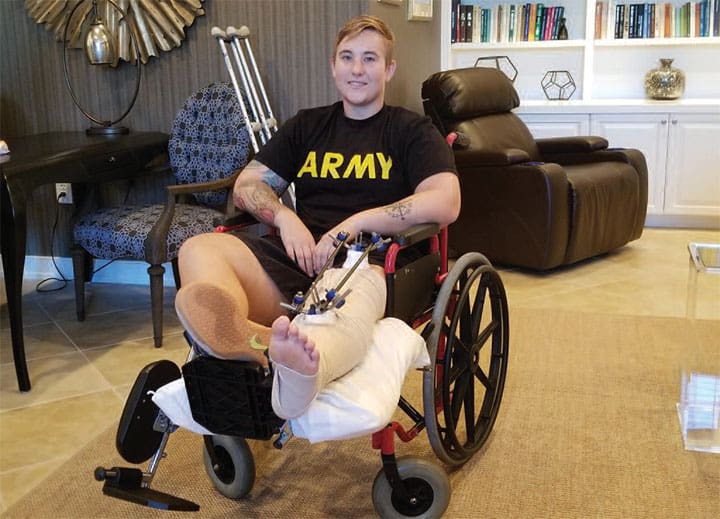Communication and compassion are key to facilitating recovery.
By Holly Carpenter, BSN, RN
Staff Sergeant Sarah Zimmerman, United States Army, suffered a moderate traumatic brain injury (TBI) last summer during deployment in Afghanistan. A vehicle containing an explosive device rammed into the vehicle in which she and fellow paratroopers were traveling. Zimmerman was knocked unconscious and sustained multiple injuries, including burns, leg fractures, and a TBI. After a heroic rescue by uninjured soldiers, Zimmerman reported feeling “confusion, mostly.” She added, “When I woke up inside the truck, I thought I was dreaming. I couldn’t focus at first or comprehend what was happening. I couldn’t hear much because my eardrums were blown and my head was foggy. As a medic, I knew pretty quickly that I was showing signs of a TBI.”
 Zimmerman offers the following tips to nurses caring for patients with TBI:
Zimmerman offers the following tips to nurses caring for patients with TBI:
- “Don’t take anything your patient says or does personally. My more prominent symptoms were agitation and irrational irritation. I would get mad at friends and family and have no idea why—but I couldn’t control it.
- Patients without medical training may not know about the symptoms that come with a TBI. Explain symptoms in simple terms. You may have to do this repeatedly because of short-term memory problems.
- Ensure patients understand their treatments, care plan, and why following them is imperative.
- Let patients know that recovery takes time. Because TBI can be an invisible injury, many people don’t understand its debilitating effects. For the patient, TBI may cause frustration and feeling like nothing is working properly. It took months for my symptoms to subside, and I still have residual issues. Encourage patients on their journey to recovery.”
Zimmerman has returned to duty and reports feeling almost back to normal. She has memory problems and ringing in her ears, but the symptoms are decreasing. “When [others] can’t see an injury, [they] may assume you don’t have one. The help and understanding from my medical team, friends, and family go a long way in making sure I make a full recovery,” Zimmerman said.
Holly Carpenter is the senior policy advisor in Nursing Practice and Innovation at the American Nurses Association.
Selected reference
Taylor CA, Bell JM, Breiding MJ, Xu L. Traumatic brain injury–related emergency department visits, hospitalizations, and deaths—United States, 2007 and 2013. MMWR Surveill Summ. 2017;66(9):1-16.
ant3-ANA NPWE-208


















